This Is How Scientists Think Birds See The Earth’s Magnetic Field.

This is how scientists think birds see the Earth’s magnetic field.
See how the black patches align over certain areas? That dark patch at the base of their vision shows South, with the reverse indicating North. Researchers think this might be how birds like pigeons can use magnetic fields to navigate.
Here’s how it works: there’s a protein in their eyes called cryptochrome. When blue light hits it, it becomes active, and stays active for a little while. How long it stays active for, though, depends on the Earth’s magnetic field, and since cryptochrome is known to affect the sensitivity of the birds’ retinas to light, we think this is the effect it has on their vision.
We have this very same molecule in our eyes, but the molecule that lets it stay active for long enough to be affected by the magnetic field, superoxide, is toxic, so the antioxidants in our eyes lock it down too quickly. Researchers think we’ve traded longevity for magnetovision.
Want to know more? We made a whole video answering the question, do blind birds can navigate!? Watch it here: https://youtu.be/7yBMUrlpe5s
More Posts from T-sci-eng and Others

This month on FYP!
It has been a blissful month in physics with the nobel prize for the work on gravitational waves and LIGO swiftly striking back with the detection of a neutron star merger.
At FYP! we have started to dwell a little bit into the essence of condensed matter physics while exploring some really cool science and engineering along the way.
Here’s what went down on FYP! this month:

Nobel prize in physics article on Gravitational waves
Gravitational waves, Light and Merging neutron stars

Paramagnets and Combinatorics
Diamagnetic levitation - Ig Nobel prize(2000)
Levitating frogs and superconductivity

Revisiting rolling shutter
Cooking with a computer (the importance of a heat sink on a computer)
Cartoon laws of physics
Beautiful proofs (#3) - Euler’s sum
Have a great day!




Concrete vs. Cement
Concrete and cement are (mostly) two different materials. Why mostly? Because concrete is made using cement. Though cement can (technically) be used on its own, concrete cannot be made without first making cement.
Classified as a ceramic, cement starts as a powder, a mixture of limestone and other minerals, which is heated and mixed with gypsum to form what we know of as cement. Still a powder in this form, once water is added and mixed the cement then hardens.
Portland cement, probably the most well known and commonly used cement, is classified as a hydraulic cement. This essentially means that once water has been added the chemical reaction, called hydration, that hardens the cement is not dependent on how much water is added. Hydraulic cements can harden underwater and remain strong even in wet conditions. As a side note, Portland cement is not a brand name, but a particular type of cement.
On the other hand, concrete is composed of cement, aggregate, and water, and is thus classified as a composite. Composites are defined as consisting of a matrix or binder that has a reinforcement within it. In the case of concrete, the cement water mixture is the matrix in which the reinforcement, or aggregate exists.
The aggregate is typically comprised of stones, rocks, and sand and its addition increases the durability of the concrete. The amount of the aggregate or the size of the aggregate added can also effect the water-to-cement ratio required to harden the material, strengthening the final product. The hardening process continues for years, meaning that concrete only gets stronger with age.
Though most concretes are lime-based, asphalt concrete uses asphalt as the cement material and polymer concretes also exist. Another common type of concrete is reinforced concrete, in which rebar, or reinforcing bars, are embedded within to add to the strength of the concrete.
Sources: ( 1 ) ( 2 ) ( 3 ) ( 4 ) ( 5 )

Here’s every total solar eclipse happening in your lifetime. Is this year your best chance?
On Aug. 21, a total solar eclipse will be visible from the continental United States. It’ll be the first to traverse coast to coast in nearly a century. Learn more about past and future eclipses: See full graphic.
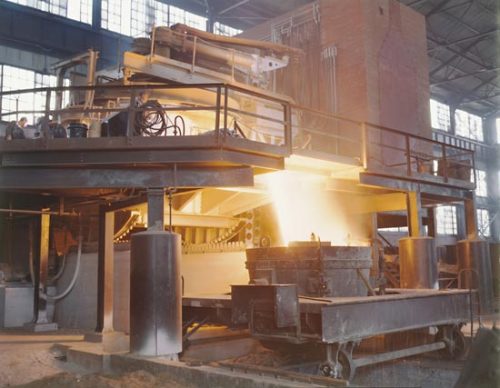
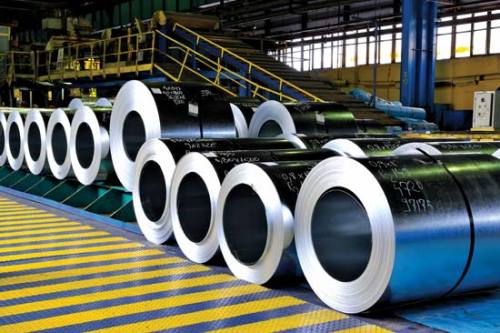


Alloys: Steel
According to Dictionary.com, steel is “any of various modified forms of iron, artificially produced, having a carbon content less than that of pig iron and more than that of wrought iron, and having qualities of hardness, elasticity, and strength varying according to composition and heat treatment: generally categorized as having a high, medium, or low-carbon content”.
Perhaps the most well known alloy around, as well as one of the most common materials in the world, steel is essentially iron with a small percentage of carbon (and, on occasion, one or more other elements). Not enough carbon and you’re stuck with wrought iron, too much carbon and you get cast iron. The graph above is a binary iron-carbon phase diagram that goes from zero percent carbon to about 6.5 percent, illustrating the various phases that can form.
Steel has been known about since ancient times, some pieces dating back to 1800 BC, but it was the invention of the Bessemer process during the industrial revolution that really popularized the alloy. (Technically, similar methods had been used before, particularly in China and Japan, but Henry Bessemer invented the modern method, industrializing it and obtaining a patent in 1856.)
Mainly used in construction, the alloy has been used for almost every possible application: from office furniture to steel wool, from bulldozers to washing machines, and from wires to watches, the possibilities are pretty much endless. Steel is also one of the world’s most-recycled materials, able to be used more than once, with a recycling rate of over 60% globally.
The addition of carbon allows the steel to be stronger than the iron it’s made from. Adding nickel and manganese increases its tensile strength, chromium increases hardness and melting temperature, and vanadium also increases hardness while making it less prone to metal fatigue. Stainless steel has at least eleven percent chromium, whereas Hadfield steel (which resists wearing) contains twelve to fourteen percent manganese. Check out these links for more information on the effects of adding certain elements.
Sources: 1 (top images), 2 (bottom images)

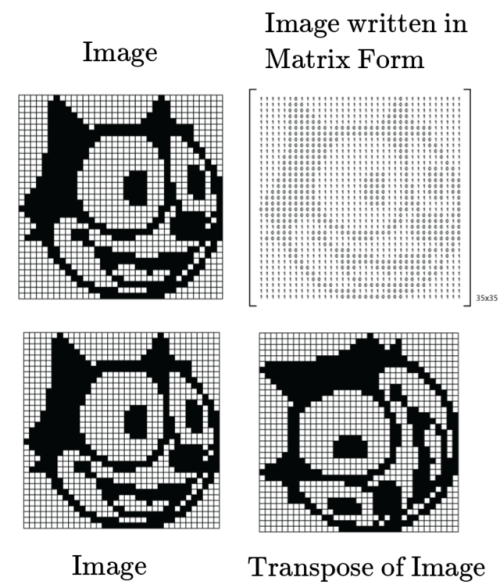

On the transpose of a matrix
In this post, I would just like to highlight the fact an image can be represented in a matrix form and matrix transformations such as transpose, shearing, scaling, etc, from an image processing point of view are purely physical !
Check out this article from the klein project if this post interested you.
Have a great day!
* Interactive Felix the cat and matrix

1. Lungs don’t just facilitate respiration - they also make blood. Mammalian lungs produce more than 10 million platelets (tiny blood cells) per hour, which equates to the majority of platelets circulating the body.
2. It is mathematically possible to build an actual time machine - what’s holding us back is finding materials that can physically bend the fabric of space-time.
3. Siberia has a colossal crater called the ‘doorway to the underworld’, and its permafrost is melting so fast, ancient forests are being exposed for the first time in 200,000 years.
4. The world’s first semi-synthetic organisms are living among us - scientists have given rise to new lifeforms using an expanded, six-letter genetic code.
5. Vantablack - the blackest material known to science - now comes in a handy ‘spray-on’ form and it’s the weirdest thing we’ve seen so far this year.
6. It’s official: time crystals are a new state of matter, and we now have an actual blueprint to create these “impossible” objects at will.
7. A brand new human organ has been classified, and it’s been hiding in plain sight this whole time. Everyone, meet your mesentery.
8. Carl Sagan was freakishly good at predicting the future - his disturbingly accurate description of a world where pseudoscience and scientific illiteracy reigns gave us all moment for pause.
9. A single giant neuron that wraps around the entire circumference of a mouse’s brain has been identified, and it appears to be linked to mammalian consciousness.
10. The world’s rarest and most ancient dog isn’t extinct after all - in fact, the outrageously handsome New Guinea highland wild dog appears to be thriving.
11. Your appendix might not be the useless evolutionary byproduct after all. Unlike your wisdom teeth, your appendix might actually be serving an important biological function - and one that our species isn’t ready to give up just yet.
12. After 130 years, we might have to completely redraw the dinosaur family tree, thanks to a previously unimportant cat-sized fossil from Scotland.
13. Polycystic ovary syndrome might actually start in the brain, not the ovaries.
14. Earth appears to have a whole new continent called Zealandia, which would wreak havoc on all those textbooks and atlases we’ve got lying around.
15. Humans have had a bigger impact on Earth’s geology than the infamous Great Oxidation Event 2.3 billion years ago, and now scientists are calling for a new geological epoch - the Anthropocene - to be officially recognised.
16. Turns out, narwhals - the precious unicorns of the sea - use their horns for hunting. But not how you’d think.
17. Human activity has literally changed the space surrounding our planet - decades of Very Low Frequency (VLF) radio communications have accidentally formed a protective, human-made bubble around Earth.
18. Farmers routinely feed red Skittles to their cattle, because it’s a cheap alternative to corn. ¯\_(ツ)_/¯
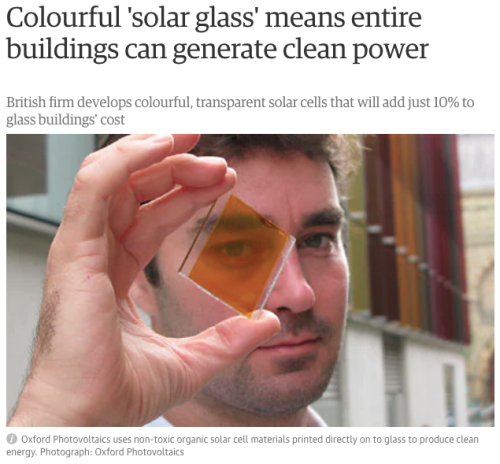
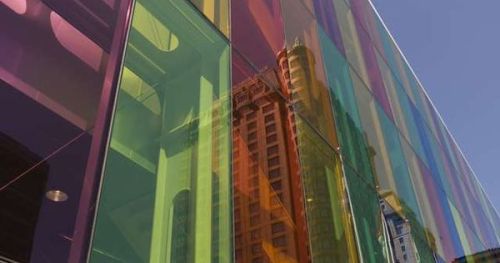

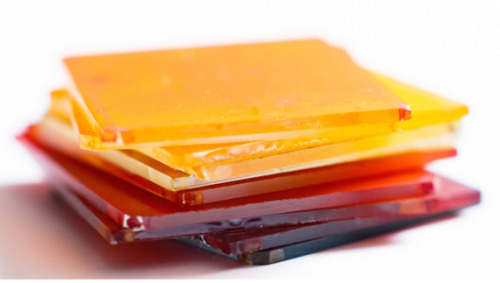
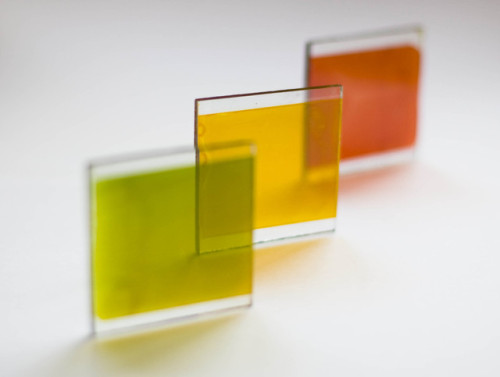
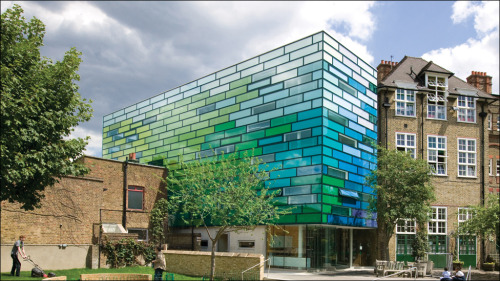
Just imagine a world full of beautiful stained glass windows which also generate electricity…
[Oxford Photovoltaics]
5 things you didn’t know about... Concorde

Credit: British Airways
1. Operated by British Airways and Air France, Concorde went into operation in 1976, following 5,000 hours of flight testing. Seating 100 passengers, it catered to the privileged or business traveller. Concorde was withdrawn from service in 2003, after 27 years.
2. The most popular route for the British carrier was from London Heathrow to New York JFK in just three hours and 20 minutes. Cruising at Mach 2.02, passengers experienced heights of 60,000ft, a vantage point from which they could see the curvature of the Earth below and dark skies above at midday.
3. The four Olympus 593 engines that powered Concorde were twin spool turbojets.
4. The materials used for Concorde’s structure needed to withstand temperature extremes – subsonic speeds, the aircraft fuselage would experience lows of -35°C, but at Mach 2 the temperature reached 127°C at the nose.
5. Concorde’s long, pointed nose cone played a key role in landing. Formed of resin-bonded glass fibre, as metals would interfere with the signals detecting storm clouds, the hydraulically powered nose cone could be moved independently to an angle of 12.5° on landing, allowing the pilot to see the approaching runway.
To find out more see page 60 of the June issue of Materials World or visit http://bit.ly/2qDPjJC.

-
 monamelissa reblogged this · 4 years ago
monamelissa reblogged this · 4 years ago -
 sharptootheddancer liked this · 4 years ago
sharptootheddancer liked this · 4 years ago -
 yesjichoi liked this · 5 years ago
yesjichoi liked this · 5 years ago -
 humdrumhummus liked this · 5 years ago
humdrumhummus liked this · 5 years ago -
 wormbenso liked this · 5 years ago
wormbenso liked this · 5 years ago -
 1esknineteen liked this · 5 years ago
1esknineteen liked this · 5 years ago -
 tthirdmember liked this · 6 years ago
tthirdmember liked this · 6 years ago -
 stuobebi liked this · 6 years ago
stuobebi liked this · 6 years ago -
 hjonklike reblogged this · 6 years ago
hjonklike reblogged this · 6 years ago -
 hjonklike liked this · 6 years ago
hjonklike liked this · 6 years ago -
 isac24r liked this · 6 years ago
isac24r liked this · 6 years ago -
 ambientluminescence reblogged this · 6 years ago
ambientluminescence reblogged this · 6 years ago -
 sapphire-and-rose reblogged this · 6 years ago
sapphire-and-rose reblogged this · 6 years ago -
 nyarchivist liked this · 6 years ago
nyarchivist liked this · 6 years ago -
 zenithbold-blog liked this · 6 years ago
zenithbold-blog liked this · 6 years ago -
 theoddsideofme liked this · 6 years ago
theoddsideofme liked this · 6 years ago -
 aizarik liked this · 6 years ago
aizarik liked this · 6 years ago -
 gaypoetrybeepboop liked this · 6 years ago
gaypoetrybeepboop liked this · 6 years ago -
 blackholeinthenorthernpie-blog liked this · 7 years ago
blackholeinthenorthernpie-blog liked this · 7 years ago -
 sarcasticlipstick liked this · 7 years ago
sarcasticlipstick liked this · 7 years ago -
 thekingmen25 liked this · 7 years ago
thekingmen25 liked this · 7 years ago
